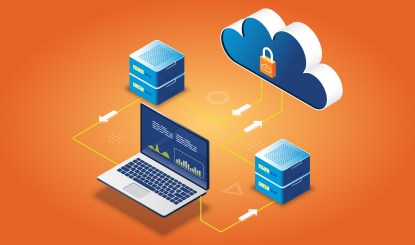With the development of computing and digital tools, organizations across industries have relied on applications to do everything from manage their data to optimizing workflows. However, even the most modern organizations often fail to keep track of the new technologies developed every year to make their jobs easier. Over time, the technology stack can become too reliant on deprecated technologies like Access to keep the lights on.
While outdated technologies seem like they don’t need to be replaced unless there’s an issue, Hammer Dev has helped enough clients update their technology stack to know that relying on outdated technologies often results in serious security risks within the organization’s operations and plenty of missed opportunities to differentiate oneself from the competition. Migrating away from tools like Access allows leaders to secure their environment while also offering key drivers of success in a digital economy like faster data processing and streamlined operations.
Hammer Dev actually had a recent engagement with a company that specialized in mineral processing and manufacturing that illustrates why it’s important to keep your technology stack up to date.
But First, Some Background
The manufacturer had been operating for almost 90 years, and just like any other manufacturer, it had a quality assurance and testing process built into its operations. For this organization specifically, labs were used to test the quality of the mineral materials prior to their being sold. Each test required technicians to record key metrics like thickness of the stone, temperature it could handle, and the like. While the organization was in its infancy, it had a single laboratory that could easily manage this process on paper, but they eventually grew to several global locations, and evolved to a more digital process by transferring the data from paper to an Access Database.
What is Access?
Access is a database management tool that Microsoft released in 1992, and it’s not uncommon for businesses to rely on it to handle their organization’s data or create simple applications to run their business’s workflows on. However, it’s limited in its overall functionality, because it’s designed for creating departmental applications, not large enterprise ones. Furthermore, Microsoft has focused on investing in other products for several years, meaning that Access has not kept up with the evolving needs and expectations of a modern business, and because of that many businesses are running their workloads on versions of Access that are no longer supported by Microsoft. To compound the issue, many who have remained on Access have attempted to stretch the capabilities of the platform to meet their needs.
In the case of this manufacturer, another issue also arose around its use of Access: connectivity with other data sources. The manufacturer had expanded over the years, requiring the establishment of multiple laboratories and even outsourced some testing capacity to third party labs. To establish a linkage between the different data sources, it was necessary to hardcode the link into the Access coding, and this presented its own unique issues because it required dedicated resources to maintaining and troubleshooting those linkages, which didn’t always run reliably. Further, Access lacked the ability entirely to connect with some of the business’s other applications like Salesforce, creating more steps within the workflow.
The lack of connectivity and reliability became such an issue that the team returned to collecting the data on paper first and keying into the Access database to ensure accuracy. This necessity to key in data and the manual troubleshooting of the linkages hampered the organization’s ability to scale its operation as efficiently as it would have liked.
Moving Past Access
Access served organizations well when it was first developed, but since its inception, there have been a variety of robust reporting and digital workflow tools that have been developed to allow organizations like the manufacturer to scale efficiently.
As a consequence, the manufacturer worked with the Hammer Dev team to migrate its existing data infrastructure onto a cloud-based platform which could easily integrate with any number of testing facilities and applications without compromising the security of the data. On top of this, a BI reporting layer was built to create an easy way to look for trends over time. Additionally, there are plans currently to expand the capabilities of the solution by deploying an application that could connect to servers remotely without needing to be on the manufacturer’s network.
How the Migration Impacted Operations
While the switch from Access to a cloud-based solution required time and resources, that investment had an immediate ROI on the organization’s ability to function because it eliminated the need to keep paper records of the data and the manual process for pushing those data into the database. Additionally, having all the data centralized in a single place meant that every testing facility or partner is now able to gain insight from across the entire organization as well as historical data. Similarly, the solution has driven consistency across all locations and delivered the ability to manage and update the application from a centralized location.
While Access was useful in helping organizations to manage data and workflow when operations were siloed and disconnected, it can be a serious impediment to growth when placed along side an otherwise modern workplace.
If you’re curious about how Access or other legacy solutions may be holding your business back, or what role they should play in a modern organization, contact us.



